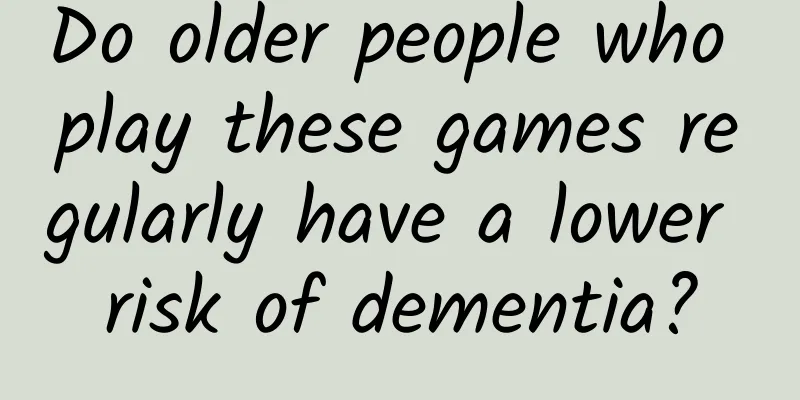|
In order to protect their children's eyesight, parents in schools are strictly prohibiting the use of electronic products. How big is the relationship between electronic screens and myopia? What are the strong correlates of myopia? The results of the study are unexpected. Written by Ding Lin New Media Editor Duan David (Intern) If the parents of a 3-year-old child are not myopic, but the fortune teller predicts that the child will be highly myopic when he grows up -
After several years, don't be surprised by the accurate prediction results of Banxianer. Although myopia is not contagious, it is becoming a "plague" worldwide. According to statistics, as of 2020, the number of myopic people in my country has exceeded 700 million, among which the number of students with myopia ranks first in the world. The myopia rate of junior high school students and college students has exceeded 70%, and the myopia rate of primary school students is close to 40%. In the era when myopia was scarce, people believed that its biggest culprit was genetics. So far, scientists have indeed found that more than 100 genomic loci are associated with myopia. These genes each make only a small contribution to the occurrence of myopia. The myopia rate half a century ago is really far from that of today. More than 60 years ago, only 10% to 20% of the Chinese population was myopic, and "four eyes" was still a derogatory word at that time. But as myopia has become a standard feature of modern people, once the word "four eyes" is spoken, it is inevitable that it will hurt relatives, friends and even oneself, so the word gradually fades out of people's vision.
Today, although the overall myopia rate in China is only 31%, the myopia rate among high school students has reached 77%, and the myopia rate among college students has reached 80%. The situation abroad is not optimistic either. According to a study published in the Journal of the American Medical Association Ophthalmology in 2008, the number of myopic people in the United States doubled between 1972 and 2004. In Europe, the myopia rate among adults aged 25 to 29 is 42.2%, while the myopia rate among adults aged 55 to 59 is half that of young people. In just one generation, myopia has developed so rapidly - gene mutations are not so fast. People are beginning to realize that perhaps environmental factors play a more important role than genetics. Genes cannot explain everything, and changes in lifestyle are the main cause of the myopia plague. As a result, smartphones, which emerged in 2007, are considered to be the culprit of myopia. The global penetration rate of smartphones continues to rise, from 21.6% in 2014 to 34.7% in 2018. At the same time, the age at which people learn to use smart devices is getting younger and younger, and even some 2-year-old children spend more than 2 hours on their devices every day. Myopia is not only an increasingly common epidemic, but also a risk factor for serious eye diseases. People with myopia are at risk of developing more serious eye diseases, such as a 21-fold increased risk of retinal detachment, a 40-fold increased risk of glaucoma, and a 6-fold increased risk of cataracts. This is the result of the elongated eyeballs of people with orthotropic myopia. Screens allow children to see a world that the previous generation could not see, but are they also damaging their eyes? (Photo source: China Daily) The problem of myopia among teenagers worries the top leaders. In August 2018, Xi Jinping issued an important instruction to jointly protect children's eyes. Subsequently, the Ministry of Education and eight other departments issued the "Implementation Plan for Comprehensive Prevention and Control of Myopia in Children and Adolescents", strictly controlling the use of electronic products and online games by teenagers, requiring schools to assign homework without relying on electronic products, and in principle use paper homework; teaching does not rely on electronic products, and the time spent using electronic products for teaching should not exceed 30% of the total teaching time in principle. Many places have issued specific implementation opinions. How much does myopia in children have to do with smart devices? Let's discuss it seriously. Is it the screen itself that hurts the eyes?
Screens do not emit harmful rays, but the habit of using screens is harmful. However, close viewing is not the main cause of myopia. However, these symptoms are not exclusive to children. Adults also experience eye fatigue after looking at their phones for a long time. In addition, these symptoms are not permanent (although they may recur). Some scientists even speculate that computer vision syndrome is mainly caused by the generally small fonts on the screen and long-term close reading, and has nothing to do with the screen itself. There is currently no clear evidence that there is a direct link between screens and myopia. Does the screen hurt the eyes? It does hurt the eyes - this is how "Computer Vision Syndrome" comes from. After looking at the screen for too long, symptoms such as dry eyes, eye fatigue, headaches, and blurred vision will appear.
Some parents think that wearing reading glasses or "blue light blocking glasses" will solve the problem. In this regard, K. David Epley, a clinical research spokesperson for the American Academy of Ophthalmology, once said: "I would rather teach my children better eye habits than buy equipment such as reading glasses - that will only make them more reckless in their eyes." It's like when you hurt your legs due to excessive exercise, you will choose to rest instead of blindly buying leggings and continuing to run. In fact, when we look at the screen, our blinking frequency will decrease, and it has no effect whether we wear glasses or not. The American Academy of Ophthalmology recommends that you take a 20-second break every 20 minutes when using your eyes at close range to relieve eye fatigue. Although the screen does not emit any eye-damaging rays, the habit of using the screen may be related to myopia. Although the mobile phone itself does not emit harmful rays, when reading the mobile phone screen, the user's viewing distance is only about 20 cm, instead of the traditional reading of 45 to 60 cm or watching TV 3 meters. 400 years ago, German astronomer Johannes Kepler complained about his myopia and blamed it on years of desk work. Since then, the saying "reading myopia" has become popular. Scientists have been looking for the connection between close-up eye use and myopia, and they have indeed found some. Early surveys have found that myopia often occurs in urban populations, highly educated people, and people with high IQs. Research from Sun Yat-sen University in Guangzhou found that in Shaanxi and Gansu, two neighboring provinces, the myopia rate of children in Shaanxi, which is richer and attaches more importance to education, is twice that of Gansu. A study published in the British Journal of Ophthalmology also found that children born in the summer are more likely to suffer from myopia than their classmates. Researchers believe that this is caused by their early enrollment a few months earlier (the dividing line for primary school enrollment is generally September 1, so children born in July and August are the youngest in the same class). This relationship between education and myopia has made researchers wonder: Is it long-term short-distance viewing that causes myopia? A study published in 2015 by the Eye, Ear, Nose and Throat Hospital of Fudan University showed that close reading may increase the risk of myopia by as much as 8 times for some children (especially those whose parents have myopia). In August 2018, a study published in Ophthalmology also found that long-term close-up viewing does increase the risk of myopia. ▲One eye-opening study even found that microscope operators who often "close-up view" have a higher rate of myopia. However, the above study also found that close-up use of the eyes is not the main cause of myopia in children. In addition, researchers currently do not understand the specific mechanism that causes the association between close-up use of the eyes and myopia.
What are the strong correlates of myopia?
Studies have shown that it is the time spent outdoors. The most important factor contributing to vision protection is bright outdoor light. The more "homebound" children are, the more likely they are to develop myopia. In 2007, a study in California, USA, expanded the focus of myopia research from simple reading to children's activities throughout the day. The authors said that the survey on outdoor activities was their last addition. Fortunately, they did so - by the fifth year of the survey, 1/5 of the respondents had developed myopia. In this survey, the only environmental factor that was strongly correlated with myopia was the time spent outdoors. Myopia research in this century has changed a long-standing prejudice: children with myopia are often "nerds." In fact, children who stay indoors for too long, whether they are nerds or not, are at risk of myopia.
What factors in the outdoors protect children's eyesight? The Australian research team made a more detailed distinction. For example, does outdoor sports protect eyesight? But the researchers did not see a vision protection effect in children who exercised indoors. In addition, during outdoor activities, children's opportunities to see objects at a distance did increase. But the most important contributing factor to vision protection in the outdoor environment seems to be bright light - researchers have found that children exercising outdoors, even picnics, and even reading (close up) on the beach are all associated with vision protection. In fact, some children who spend more time outdoors do not spend less time reading and watching screens indoors than other children. A study by the University of Sydney came to similar results. For a group of Chinese children with similar myopia rates in their parents, if they live in Sydney, where children spend an average of 13 hours outdoors per week, the corresponding myopia rate is 3.3%; while in Singapore, where children spend only 3 hours outdoors per week, the myopia rate of children is 29.1%. In this study, Chinese children in Sydney may not spend less time reading and watching screens than children in Singapore. The above studies are mainly based on questionnaires, so some scientists are still cautious about the conclusions. However, animal experiments also support the protective function of light on vision. Since the 1990s, ophthalmologists have been fitting chicks with special "glasses" to induce myopia and raising them under different light intensities.
In 2009, German scientists found that high-light environments close to the outdoor environment can slow the development of myopia in chicks by 60% compared to indoor lighting. In 2012, another rhesus monkey experiment came to a similar conclusion. Why can bright light prevent the eye axis from lengthening? The more popular hypothesis is that light can stimulate the release of dopamine in the retina, and this neurotransmitter has the effect of preventing the eyeball from lengthening during development. When a baby is born, the eyeball is almost the same size as an adult. But the baby's eyes are actually "farsighted eyes" with a shorter eye axis than adults. As the child grows up, the eyeball will grow by a few millimeters until it stops growing when it reaches a healthy shape. However, even if the above-mentioned "clues" of high light protecting vision are obtained, scientists still don't know the specific mechanism. The best guess at present is that it is related to dopamine. The normal length of the eyeball is 23 mm. The growth period of the eyeball corresponds to the time when children go to school. So far, most myopia studies have investigated children aged 4 to 12, and this period is the stage when the eyeball grows and changes shape. The eye axis generally stops growing before the age of 20, but the eye axis of many myopic children does not stop lengthening. Unlike "pseudomyopia" caused by excessive use of the eyes and eye fatigue, true myopia (also known as axial myopia) is caused by excessive eye axis length. The light refracted by the "long eyeball" cannot be focused on the retina, but is focused in front of the retina, causing blurred vision. ▲Comparison of focusing of normal eyes, myopic eyes and hyperopic eyes (picture from the Internet) So, what is the connection between outdoor activities and preventing eye axis lengthening? The specific reason is still unclear. Perhaps it is bright light, more frequent distance focusing, increased physical exercise, or even more vitamin D brought by sunlight exposure? The more popular hypothesis is that light can stimulate the release of dopamine in the retina, and this neurotransmitter has the effect of preventing the eyeball from elongating during development. Retinal dopamine is released in large quantities during the daytime part of each "diurnal cycle". These neurotransmitters switch the eyeball from the "night vision mode" dominated by rods at night to the visual mode dominated by cones during the day. Researchers suspect that if children are kept in a darker environment indoors for a long time during the day, the circadian rhythm of their eyes will be disrupted, and their growth will become irregular, eventually leading to excessive eye length. Evidence supporting this hypothesis also comes from chicks wearing glasses. In a 2010 study, some chicks were injected with the dopamine inhibitor Spiperone into their eyes, and in subsequent experiments, simulated bright light failed to save their vision loss.
Can brightening indoor lights prevent myopia?
Don't let your eyes fool you. Outdoor light intensity on a cloudy day is about 10,000 lux; even a well-lit indoor environment is generally less than 500 lux. In fact, the general indoor lighting intensity is not even as strong as the outdoor environment on a cloudy day. In a well-lit house, we usually don't turn on the lights during the day - because it's really unnecessary. You may be wondering: how can the indoor lighting be dim? Don't let your myopia fool you. Our eyes are too adaptable to low light.
In an interview with Nature News, Ian Morgan, a myopia researcher at the Australian National University, estimated that children need to spend three hours a day in an environment with a light intensity of more than 10,000 lux to protect their eyesight. 10,000 lux is roughly equivalent to the light intensity you feel when wearing sunglasses under the shade of a tree on a sunny day; the outdoor light intensity on a cloudy day is less than 10,000 lux; and even a well-lit indoor environment generally has an illumination of less than 500 lux. In Australia, where Morgan was born and raised, it is normal for some children to spend three hours outdoors every day. Only 30% of 17-year-olds there are myopic. In other parts of the world (such as Europe, the United States, and East Asia), children spend only one to two hours outdoors every day. In 2009, Morgan tested whether increasing outdoor time could protect the poor eyesight of Chinese children. In collaboration with the Zhongshan Eye Center, he randomly selected six schools in Guangzhou and gave some of the 6- to 7-year-olds a 40-minute outdoor physical education class before school every day. Three years later, the myopia rate of more than 900 children who participated in physical education classes was 30%, compared with 40% for children in the control group of schools. In another experiment conducted in Taiwan, China, school teachers asked students to go outdoors during the 80 minutes of get out of class time each day instead of staying in the classroom. One year later, the myopia rate of the school was 8%, while the myopia rate of nearby schools was 18%. 20% of myopic people will eventually develop high myopia, so timely intervention is important. For children whose eyeballs are developing and have not yet developed myopia, outdoor activities are a proven effective solution to combat myopia. But even for young people who are already myopic, outdoor activities also have a certain effect on preventing myopia from worsening. According to a study published in the American Journal of Medicine Ophthalmology in 2017, the protective effect of outdoor sunlight on the deepening of myopia in adults still exists until the age of 30 at the latest.
Should children’s screen time be limited?
The relationship between screen time and myopia is unclear, and it may not be wise to deprive children of potential efficient learning opportunities. Of course, other hazards of too much screen time should not be underestimated. Doctors from the American Academy of Pediatrics recommend that screen time for children aged 2 to 5 should be limited to 1 hour per day. These children can visit more educational venues or spend more time interacting with parents or peers; the academy also recommends that the eyes rest for 2 minutes for every half an hour of screen time, and avoid using screens 1 hour before bedtime; children should receive 45 minutes of outdoor activities every day - walking to and from school, and outdoor sports are all feasible options. According to current research, many organizations recommend setting daily "screen time" limits for children, such as the guidelines issued by the American Academy of Pediatrics in 2016 and the American Heart Association in 2017.
However, the trend of digitalization is irreversible. More and more people no longer look at the mountains on the distant horizon. They may have seen more mountains on the screen than in reality. If people don't use mobile phones, I'm afraid they won't even be able to get the above-mentioned eye protection suggestions. But there are also negative voices-in early 2019, the Royal College of Paediatrics and Child Health published a guidance document in the British Medical Journal Open Edition, advising parents not to set "screen time" limits for children of all ages (with one exception: no screens one hour before bedtime), because there is currently no scientific evidence that "screen time" itself will cause harm to children. The report pointed out that previous guidelines paid too much attention to the negative effects of screens, but in an era when the popularization of digital devices has become irreversible, it is not wise to deprive children of potential efficient learning opportunities. On the other hand, it must be very difficult to completely limit children's screen time... However, even if the relationship between "screen time" and myopia is not clear, its harm should not be underestimated - incorrect posture can cause neck and back problems, and long-term sitting is also related to metabolic problems and mental illness... If the screen takes up the time that children should use for sleep, socializing and exercise, it will cause various negative effects: obesity, mental problems, heart disease, and poor grades. Therefore, as to whether "screen time" causes myopia, relevant research has yet to be carried out. The effects of eye-screen distance, body posture and type of digital content also need to be clarified in the future.
How to give children more light? The best advice is to let children spend more time outdoors, but unfortunately, when children finish their homework every day, the strong outdoor light has been missed. What's worse, the survey shows that the illumination in classrooms is far from meeting the standard.
In 2018, a large international study that consulted 847 ophthalmologists found that 60.2% of experts would recommend reducing screen time, while as many as 86% would recommend increasing outdoor activities to their patients. Therefore, it may be short-sighted for parents to simply deprive their children of their mobile phones without giving them the opportunity to go out. In fact, children who rarely use screens and stay at home all day are still prone to myopia. Research conducted in Israel shows that Orthodox Jewish boys who spend a lot of time reading scriptures have a much higher rate of myopia than their peers. The current situation is: increasing homework, more and more fun mobile games... are all restricting children's outdoor activity time. In 2016, the British government published a two-year survey, pointing out that 74% of British children aged 5 to 12 spend less than 1 hour outdoors every day. The sharp-eyed Guardian found that the United Nations' guidance for guarding prisoners is: at least 1 hour of outdoor activities every day. What takes away children's outdoor activity time? They spend most of the day at school, and after returning home, they try to finish their homework. The rest of the time is for various digital entertainment and digital social interaction - by then it may be dark, and the most important eye protection factor (strong light) of outdoor activities has been missed. Children in East Asia have a greater homework burden. According to a 2014 survey cited by Nature News, 15-year-old middle school students in Shanghai spend an average of 14 hours a week on homework, compared with only 5 and 6 hours for students in the UK and the United States. ▲Homework siege (source: qz.com) From this perspective, screen time may not be fully responsible for children's myopia - study time is the big head. Judging from the data, Asia's "myopia plague" began quietly in the second half of the 20th century when digital devices were not popular. The burden of adding extra outdoor time every day seems to fall only on the school, because it is too difficult for parents to squeeze out a few hours of daytime time. Singapore once launched a campaign to encourage parents to take their children out for activities, but follow-up studies show that these campaigns are useless... Besides, the outdoor environment is not always a comfortable place: sometimes it is scorching hot, sometimes it is freezing cold, and sometimes it is shrouded in haze. In addition to increasing outdoor activities, it is also important to increase indoor lighting. In 2015, a study by Beijing Tongren Hospital affiliated to Capital Medical University found that children who use fluorescent lamps at home are more likely to be myopic than those who use incandescent lamps. This may be because the spectrum of incandescent lamps is wider (closer to daylight) and the brightness is relatively higher. ▲Comparison of the spectrum of incandescent lamps, fluorescent lamps, LEDs and sunlight (from the Internet) However, the reality is not optimistic. According to the "2014 Status of Kindergarten Visual Health, Visual Environment and Related Factors" jointly completed by the Guangzhou Primary and Secondary School Health Promotion Center, Sun Yat-sen University Sun Yat-sen Eye Center and Sun Yat-sen University School of Public Health, based on the new national standard, the desktop illumination of Guangzhou school classroom lighting meets the standard rate of only 34.2%, and the blackboard illumination of classrooms meets the standard rate of only 8.8%, which is surprising. In animal experiments, indoor lighting that emits strong light also has the effect of protecting eyesight. Lighting boxes used on the market to treat "seasonal mood swings" can output light intensities of more than 10,000 lux. However, this high-intensity indoor lighting solution has not been tested in humans. In the view of Nathan Congdon, an ophthalmologist at Queen's University in Canada, since it is difficult to bring children to the sun, it is better to bring the sun to the children. He collaborated with researchers from Sun Yat-sen University to conduct a pilot study of glass classrooms in Guangzhou. Preliminary measurements show that the light intensity in this "bright classroom" is 1330-4060 lux: on the one hand, it is much higher than the 245-738 lux in traditional classrooms, and on the other hand, it is not too bright in summer or on sunny days to affect students' reading (the light intensity outdoors is 8960-36000 lux). Can this classroom improve students' eyesight? We can only wait and see. In the meantime, don't stay at home so much, and let your children "go out and see more often."
Produced by: Science Central Kitchen Produced by: Beijing Science and Technology News | Beijing Science and Technology Media Welcome to share to your circle of friends Reprinted by public accounts, newspapers, etc. Please send an email to [email protected] Reproduction without authorization is prohibited, and offenders will be prosecuted Source: Beijing Science and Technology News |







![[Popular Science of Chinese Military Technology] How powerful is the electromagnetic catapult technology on aircraft carriers?](/upload/images/67f2355dd46b9.webp)


